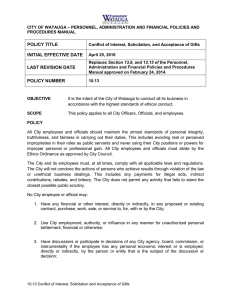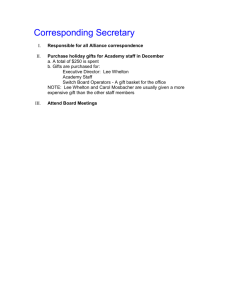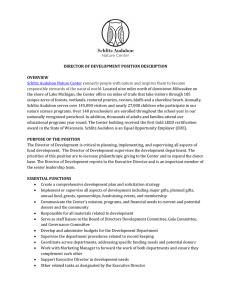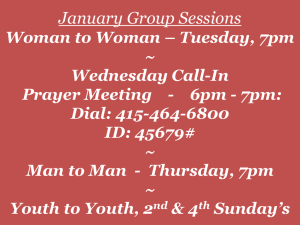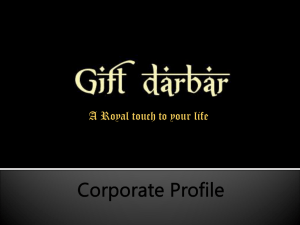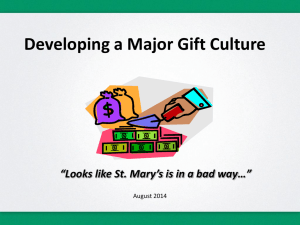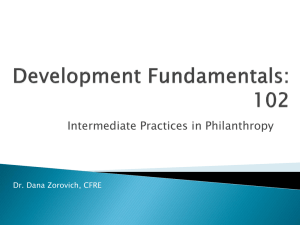Creating Your Development Plan, Goals and Structure
advertisement
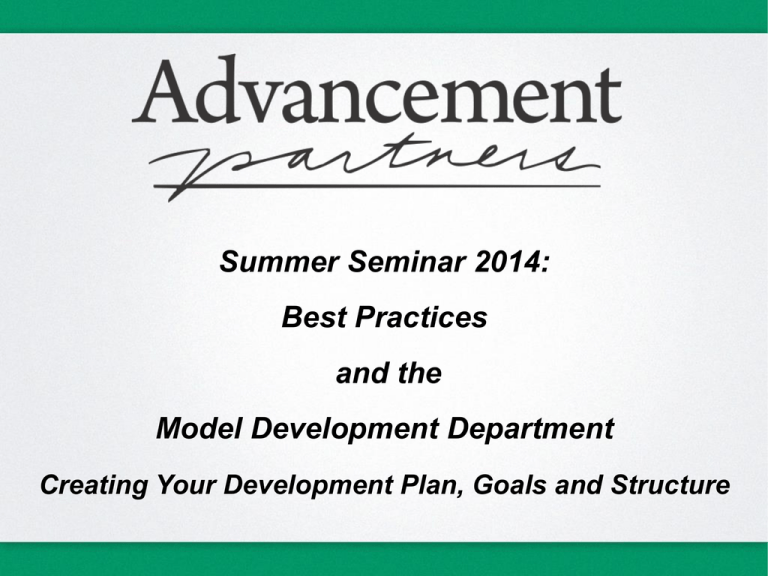
Summer Seminar 2014: Best Practices and the Model Development Department Creating Your Development Plan, Goals and Structure The Development Plan Step 1: Fundamentals • • • Define the strategic vision – Leadership Acknowledge the 3 Components of philanthropic giving to Cath. education. • • • Annual Giving Major Gifts Planned Giving Fundraising or Advancement? The Development Plan Step 1: Fundamentals • Assessment of Strengths and Weaknesses • Create the appropriate organizational structure • Hire/assign the “right’ people. • Resources/Budget Step 2: Define Plan Components • The 3 Core Disciplines: Annual Giving Major Gifts Planned Giving • • • • • Events – Limit the Number Communications/Stewardship Relationship Management Major Gift Focus – Iden., Cult., Sol. How to Promote Planned Giving? Step 3: First Draft • How much funding is needed? • • • • • Based upon real budgetary needs This year: unrestricted/temporarily restricted Three to five years: within the context of the school’s Strategic Plan What are the capital projects that require funding? How will you direct limited human and financial resources? • • • • • Data mining and management Relationship management/maintenance and major gift focus Annual Fund Major Gift Program Planned Giving Establish Metrics: Annual Fund Annual Fund Metrics: • • • • • • • • • $ Goal Alumni % Current parent % Board participation Donor acquisition -- # of new donors Donor enhancement -- # of donors giving more $ Track each mailing/solicitation separately Effectiveness of segmentation strategy and approach Use survey information to shape strategy Establish Metrics – Major Gifts The Major Gifts “Sales” Process: Priority of capital funding projects - $ goal Number of solicitation calls per month Number of cultivation calls per month Number of MG prospects one MG officer can manage “Comprehensive ask” Weekly/Monthly/Quarterly review of objectives and accomplishments Establish Metrics – Planned Giving Planned Giving: • • • • • • • • Key element of the endowment solution # of educational sessions # of communication pieces # of awareness meetings with key people — establish call goals: • Centers of Influence (attorneys, trust bankers, fin. planners) • Alumni/Benefactors/Friends/Leaders 65 years and up. # of solicitation meetings # in hopper who are considering a PG # who have indicated a gift has been established Create Legacy Club Step 3: Finalize the Plan • Put it in writing and on a white board in your office • Keep it in front of you to facilitate every day engagement • Split into two halves (based on the semesters) • Share it with the team responsible for implementation • Conduct regular review, updates and progress reports Setting Goals – Annual Giving • • • • Set dollar goal for the annual fund first Set participation goals for the AF next Create the budget for the annual fund Set net dollar goal for the auction and other fundraisers by clearly defining all costs involved • Manage the budget carefully!! • Work toward centralizing all fundraising in the Development Dept. Setting Dollar Goals – Major Gifts • Involves prospect identification to determine MG potential: • Screen the database for wealth electronically • Conduct screening and rating sessions (local intelligence) • Review history of giving records • Consider the relationship with the prospect • Conduct a formal Feasibility Study • Create the giving pyramid Setting Goals – Planned Giving • Set a call goal – a number of awareness/solicitation in person visits for the year • Set a general communications/awareness goal for the year: number of PG targeted mailings, article in newsletter, web page, information sessions. Advancement Structure D I RECTOR OF AD VAN CEM EN T D I RECTOR OF AN N UAL FUN D D I RECTOR OF M AJ OR GI FTS D ATABASE M AN AGEM EN T/ AD M I N . SUPPORT D I RECTOR OF AL UM N I REL ATI ON S SPECI AL EVEN TS COORD I N ATOR M aximizing Philanthropic Potential Leadership Personnel M ission Plan Budget D isciplined I mplementation
